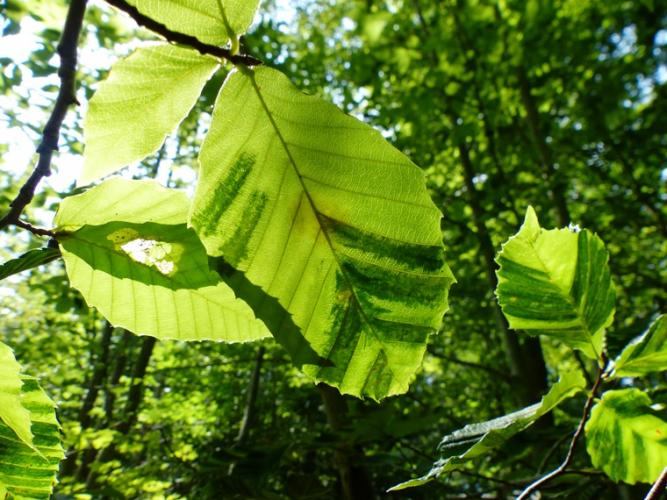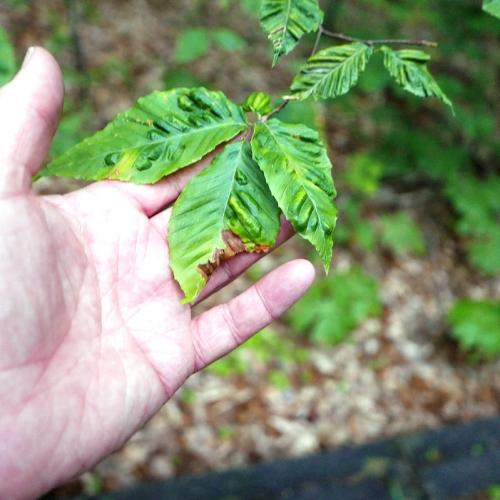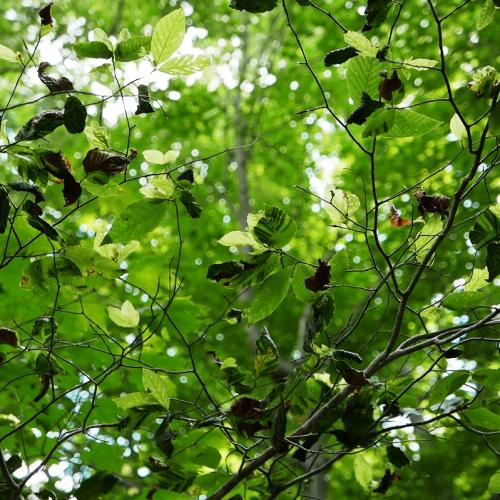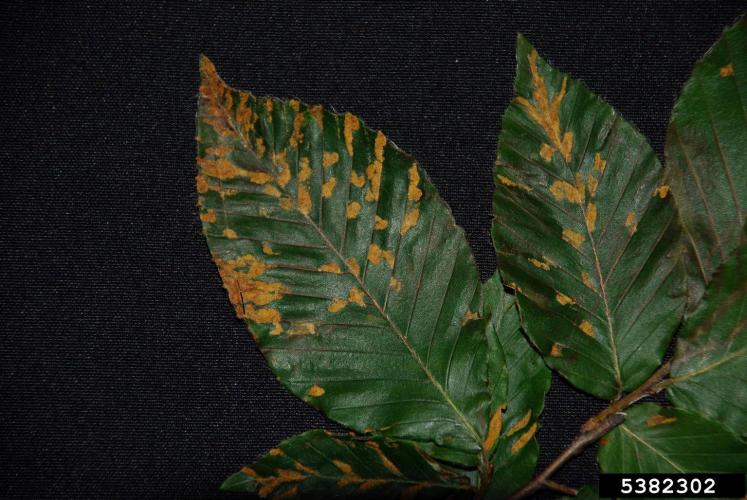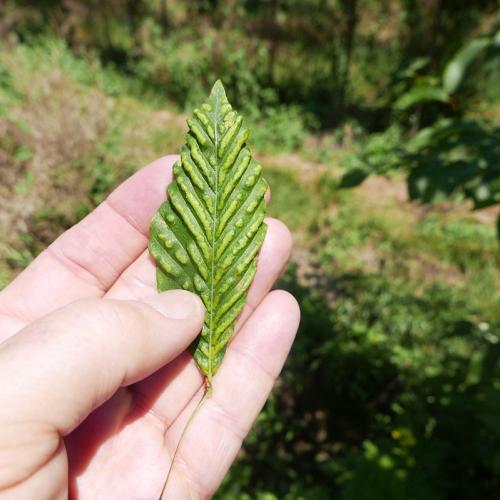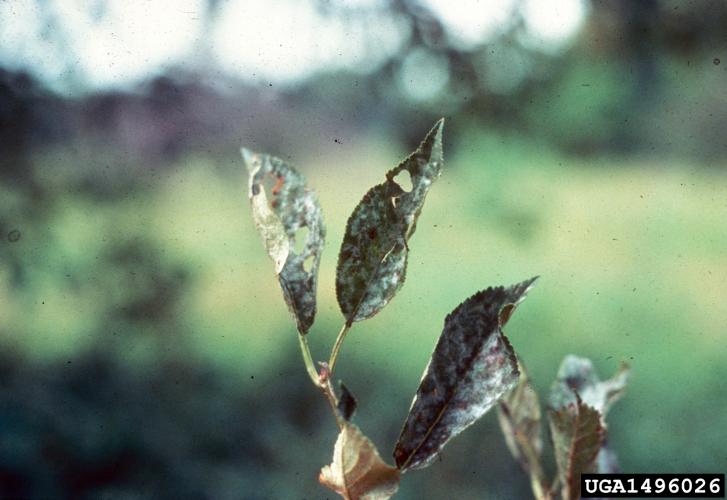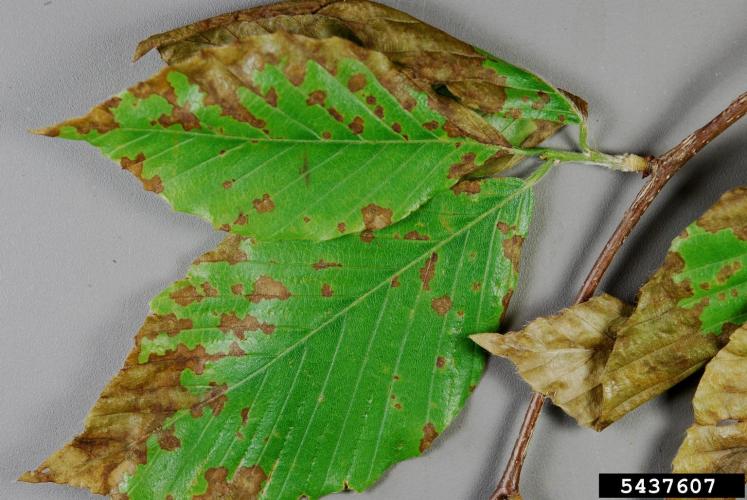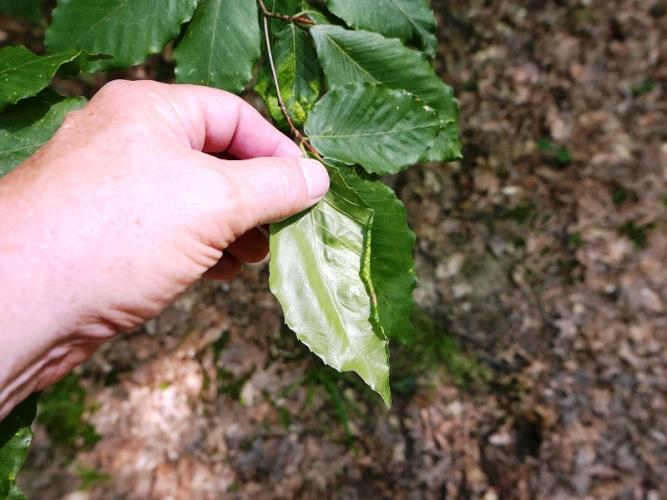Beech Leaf Disease
Identification
Beech leaf disease (BLD) was first discovered in North America in 2012 in Ohio. It has since been detected in Pennsylvania, New York, Connecticut, Massachusetts, and Rhode Island. BLD affects both American and European beech trees, and causes leaf deformation, dieback, and potential mortality of infested hosts. All ages and size of beech are affected, although the rate of decline can vary based on tree size. In larger trees, disease progression is slower, beginning in the lower branches of the tree and moving upward. In smaller trees, disease progression can be rapid which leads to high mortality of saplings and understory beech.
The causal agent of BLD is an introduced nematode from Japan, Litylenchus crenatae mccannii.
signs and symptoms
Symptoms of BLD are observed on leaves, buds and branches.
Leaf and bud symptoms do not progress throughout the growing season.
In early stages:
- Very little premature leaf drop occurs during early stages.
- Dark striping pattern appears on the leaves, parallel to the leaf veins.
- The darkened area is slightly raised and is thicker than the rest of the leaf tissue. This is most apparent when viewing from below.
- Striping is present upon leaf-out in the spring and most leaves will remain on the tree until autumn.
- Aborted buds which appear as crispy empty buds on an infested branch.
As the disease progresses:
- Eventually, lighter, chlorotic striping may also occur.
- Leaves near branch tips will become curled or shriveled, discolored, and deformed.
- Premature leaf drop which can lead to dieback.
- Reduced bud and leaf production will occur.
- Dieback starts on lower branches and progresses upwards.
Biology
All ages and size of beech are affected, although the rate of decline can vary based on tree size. In larger trees, disease progression is slower, beginning in the lower branches of the tree and moving upward. The disease also appears to spread faster between beech trees that are growing in clone clusters. Most mortality occurs in saplings within 2-5 years. Where established, BLD mortality of sapling-sized trees can reach more than 90%.
Origin
A nematode species, Litylenchus crenatae mccannii, that was first described in Japan is associated with beech leaf disease. Studies show that nematodes may overwinter inside of buds and affect leaves before budbreak in the spring, however survival and dissemination of the pest are currently unknown.
Ecological Threat
BLD can cause juvenile tree mortality, and can potentially lead to species loss across the landscape. Without beech regeneration there is a potential for forest composition change, which would impact a variety of wildlife. BLD also makes trees more susceptible to other pests and pathogens.
Vermont Distribution
Beech leaf disease has been confirmed in southeastern Vermont
How You Can Help
- Help prevent the spread of invasive pests, Don't Move Firewood!
- While there is no restriction on planting beech trees, do not dig beech trees from the forest to plant elsewhere.
- Report observations here!
- Share this poster.
Citations
Photo Credit
Dark strip, Leaves near branch tip, shriveled leaves from below: Ohio State University
Erineum patch: Eric R. Day, Virginia Polytechnic Institute and State University, Bugwood.org
Erineum patch: Ohio State University
Powdery mildew: University of Georgia Plant Pathology, University of Georgia, Bugwood.org
Anthracnose: Nancy Gregory, University of Delaware, Bugwood.org
Leaf rolling from aphid feeding: Ohio State University
Information Credit
Savannah Ferreira, Forest Health Specialist, VT Department of Forest, Parks, and Recreation
Beech Leaf Disease, Forest Invasives Canada
Beech Leaf Disease, Connecticut Agricultural Experiment Station
